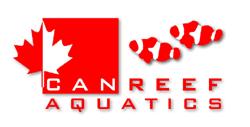
 |
|
|
|
#1
|
||||
|
||||
|
Here's another interesting observation, if I turn the lights out and wait an hour or so the larvae all release from the sides of the nursery and float around in the water column. If I turn the lights on again and wait for about a half hour they all start to reattach themselves to the sides of the nursery.
|
|
#2
|
||||
|
||||
|
i have lots of egg crate and i have store bought under gravel filters that i am going to use-for lighting i have switched my whole house to led(including my aquariums and plankton reactors)i have various led bulbs and tube fixtures to experiment with,and i know about no lighting for the berghia.my 3 berghia tanks have 3 sides of the tanks blocked off with plastic wrapping paper to allow less room light in-works really well and you can still observe the berghia
|
|
#3
|
||||
|
||||
|
Now the larvae are beginning to take "prey", this time around I have decided not to go down the normal route of NHBBS, instead I have been starting to feed them fresh water cyclops in the 200-400 micron range. Based on my experience with raising seahorses I have come to learn a couple of things:
1) artemia cysts are notorious for carrying pathogens (especially vibrio sp) 2) I have only found hydroids in association with this food source. and thirdly, one way to cut down on pathogens or disease is to introduce a food source from a different environment altogether. When we were raising seahorses we used a fresh water mysis (PE Mysis) in order to help reduce/eliminate disease. |
|
#4
|
||||
|
||||
|
I just came back from feeding the PS, and now my "female" is holding eggs again so it looks like I'll have another batch of larvae in about two weeks. Just before she released the first clutch I noticed she was developing eggs behind her head and now just a day and a half later (after she was moved back to the mating tank) they have moved down to her abdomen.
|
|
#5
|
||||
|
||||
|
Quick update at 36 hours old the larvae have developed talked eyes.
|
|
#6
|
||||
|
||||
|
Quick update: this is now day 3...last night the larvae were swimming in erratic circles which leads me to believe that they went through some type of molting process because today they are all swimming normally again......but I am still at bench mark zoea 2. Tomorrow they should go through another major molt (zoea3) and develop tensile "fins". I have also noticed them still eating "meaty" food heartily and also grazing on the film algae on the sides of the nursery. I watched one very closely and it actually left a little "plow" mark in the algae about a 1/4 of an inch long as it gobbled away.
Since my "female" is holding a clutch again I think that I am going to concentrate on "her" diet and focus on foods with a very high DHA (Docosahexaenoic acid is an omega-3 fatty acid) rather than EPA. DHA is important in the development of the central nervous system. Drawing on my experience breeding seahorses I learned that most marine organisms have the ability to convert DHA into the necessary EPA (Eicosapentaenoic acid) that they need but they cannot convert EPA into the necessary DHA that they need in development as a result you will see premature deaths in larvae or fry that are suffering from a DHA deficiency. So let's start right at the source and "pump mama" up with a high DHA diet while she is carrying the eggs. |
|
#7
|
|||||
|
|||||
|
This is one of the coolest threads I've seen in a while. Consider me subscribed.
|